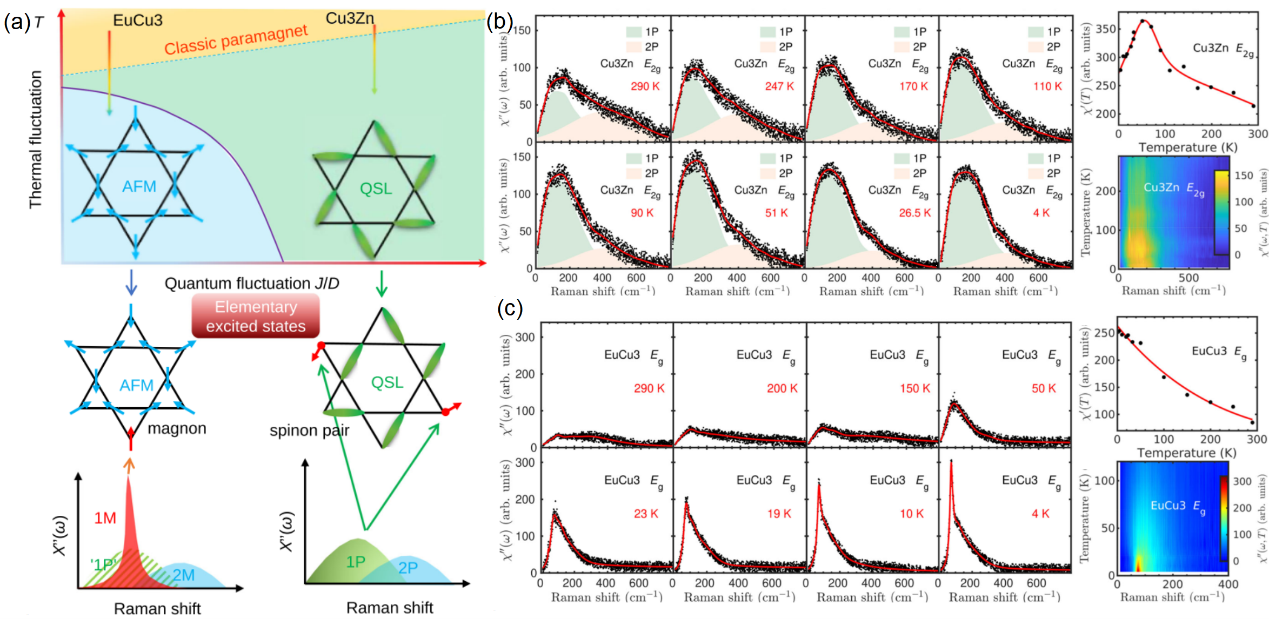Quantum spin liquid (QSL) is a new class of condensed matter states, which can be characterized by the long-range many-body entanglement of topological orders. QSL has attracted a plateau of attentions, not only because of its potential applications in high-temperature superconductivity and quantum calculation, but also its profound physics. The Kagome lattice of the spin-1/2 with antiferromagnetic interactions is a typical platform to host QSL due to the strong geometry and quantum frustration. ZnCu3(OH)6Cl2 is the first promising Kagome QSL candidate, in which no long-range magnetic order was detected down to Curie-Weiss temperature and a magnetic continuum of fractionalized spin excitations was revealed by inelastic neutron scattering. The previous studies on Kagome QSL rely on this single compound of Herbersmithite. However, the recent data from X-ray diffraction and second-harmonic generation demonstrated a lattice distortion in ZnCu3(OH)6Cl2, which suggests it is not an ideal Kagome lattice. Therefore, an alternative realization of the QSL in perfect Kagome lattice and to identify its ground state by experiments are important problems in condensed matter physics. The recent prepared Cu3Zn(OH)6FBr is another candidate for a Kagome QSL ground state, in which no long-range magnetic order was detected down to 0.02 K, four orders of magnitude lower than the Curie-Weiss temperature. Besides the absence of long-range magnetic order, the observation of fractionalized spin excitations, i.e., spinon excitation should be a direct and essential evidence for the QSL. However, the related spectroscopic evidence has not been reported yet due to the difficulty in preparation of single-crystal Cu3Zn(OH)6FBr.
Raman scattering serves as a powerful technique to probe and investigate the elementary excitations in solids through light-matter interactions, including phonons and various magnetic excitations, such as spin-wave excitation (i.e., magnon) in Kagome antiferromagnetic ordered states and deconfined spinon excitation in Kagome QSL. A direct comparison between Kagome antiferromagnetic ordered states and Kagome QSL states by the magnetic Raman scattering can reveal the spinon excitation in QSL state and help to search an ideal Kagome QSL candidate.
Recently, Prof. Ping-Heng Tan’s group, collaborated with Prof. Jia-Wei Mei’s group in Southern University of Science and Technology, utilized ultralow-frequency and polarized Raman spectroscopy to perform a systematic study on the lattice structure and magnetic excitation of single-crystal Cu3Zn(OH)6FBr, which was prepared by Prof. Jia-Wei Mei’s group. They exclude the Kagome lattice distortion in the temperature range of 4-300 K and depicted a remarkable E2g magnetic Raman continuum, which can be decomposed into one spinon-antispinon pair (1P) and two spinon-antispinon pair (2P) excitation. The 1P continuum is the characteristic fingerprint. Then they compared the magnetic excitation between Kagome QSL state of Cu3Zn(OH)6FBr and Kagome antiferromagnetic ordered state of EuCu3(OH)6Cl3, in which a sharp one-magnon Raman peak is emerged from the 1P continuum in EuCu3 (OH)6Cl3 when temperature is below the Néel temperature. In this well-defined experiment, they claimed that the magnon mode can be regarded as spinon-antispinon bound state and the confinement of spinon can drive the transition from QSL to antiferromagnetic ordered state. The work entitled with “Dynamic fingerprint of fractionalized excitations in single-crystalline Cu3Zn(OH)6FBr” (DOI: 10.1038/s41467-021-23381-9) has been published in Nature Communications. Prof. Jia-Wei Mei and Prof. Ping-Heng Tan are the corresponding authors. Mr. Ying Fu and Dr. Miao-Ling Lin are the co-first authors. This work reveals that Cu3Zn(OH)6FBr is the ideal kagome QSL by the spectroscopic evidence of factionalized spin excitation, which paves ways to probe and study the magnetic excitation in QSL.

图1、(a) Schematical comparative Raman responses for the
antiferromagnetic EuCu3(OH)6Cl3 and QSL Cu3.18Zn0.82(OH)6FBr.
Temperature-dependent Raman responses and Raman susceptibility in (b)
Cu3.18Zn0.82(OH)6FBr and (c) EuCu3(OH)6Cl3.
(DOI: 10.1038/s41467-021-23381-9)
原文链接:https://www.nature.com/articles/s41467-021-23381-9

